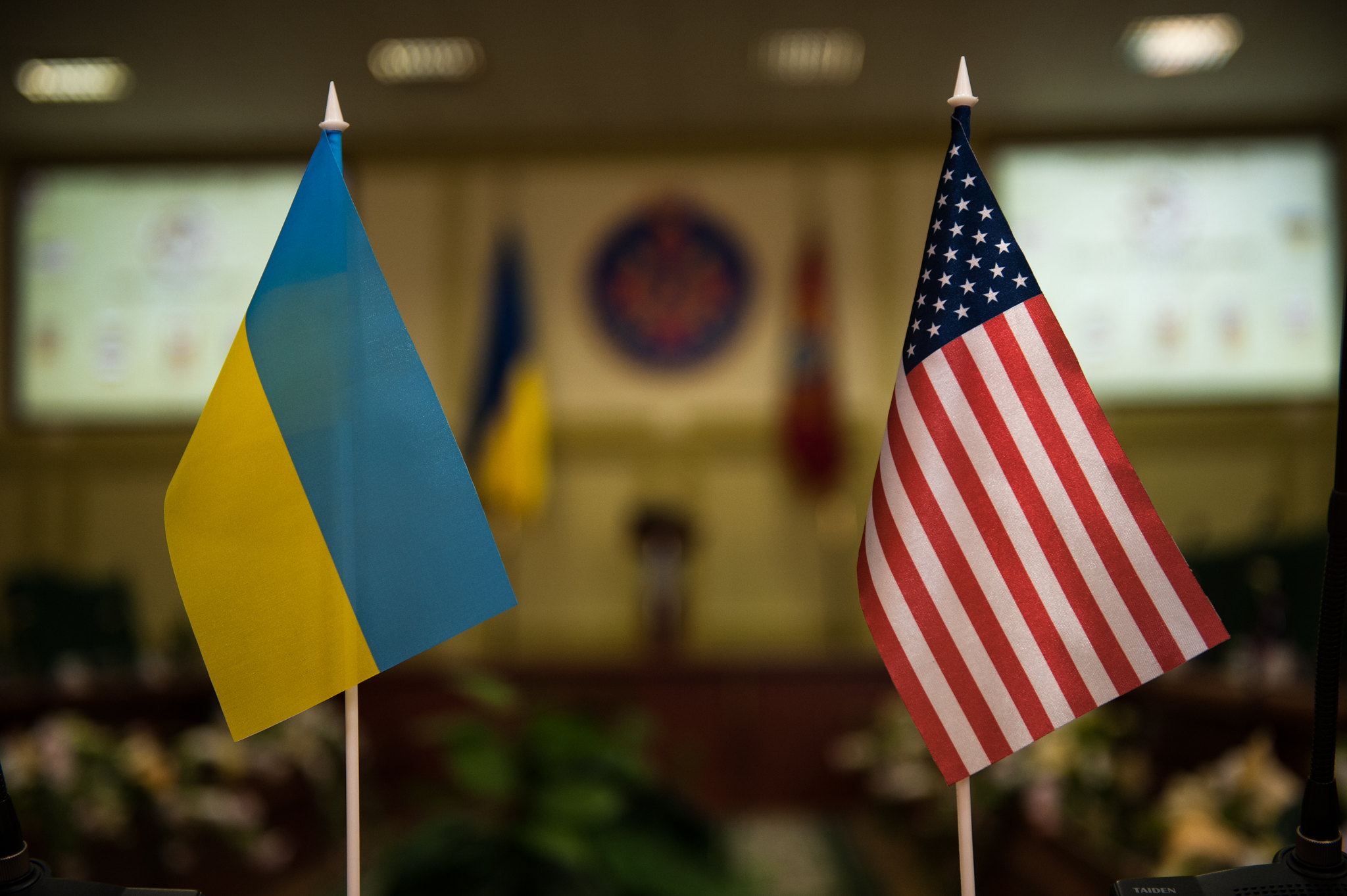Charting a Path Forward for the U.S.-Ukraine Minerals Deal

Published by The Lawfare Institute
in Cooperation With

In early May, the U.S., Russia, and Ukraine underwent a week of diplomatic oscillations—bookended by the May 16 Istanbul peace talks and a May 19 Trump-Putin phone call—that produced little in the way of concrete commitments, and proved relatively unsuccessful in moving the needle on the Kremlin’s desire to conduct its war on Ukraine.
Almost simultaneously, however, in Kyiv the United States and Ukraine finalized the details for a new U.S.-Ukrainian economic relationship. The agreement, which passed in the Rada on Victory in Europe Day by a vote of 338 out of 400, gives the United States preferential access to Ukraine’s critical minerals, energy, and infrastructure and establishes a joint U.S.-Ukraine Reconstruction Investment Fund—officially launched on May 23—that combines the U.S. private sector and know-how with Ukrainian natural resources and ingenuity.
More importantly, the deal gives the U.S. a committed investment role in securing a just peace for Ukraine and the country’s post-war economic recovery. While this signals a major step forward in institutionalizing U.S. support for Ukraine’s recovery, it will be equally important to ensure that governance structures of the fund respect Ukrainian sovereignty, operate transparently, and align with Ukraine’s path toward EU membership. Any external partnership must be embedded within Ukraine’s constitutional and institutional framework, with safeguards to ensure that decision-making on critical assets remains Ukrainian-led.
As it comes into force, the agreement goes further than any previous policy in anchoring the Trump Administration to Ukraine and its allies. It recognizes Russia’s full-scale invasion; affirms America’s desire for a free, sovereign, and secure Ukraine; recognizes that pulling Ukraine out of Russia’s orbit requires an unimpeded path to EU accession; cuts off any actors—including China—that financed or supplied “Russia’s war machine” from benefiting from the fund’s work on Ukraine’s reconstruction; creates a reconstruction fund management system between the U.S. and Ukraine; and recognizes that near- and mid-term profitability must be baked into Ukraine’s reconstruction—not merely as a payment scheme to the U.S., and certainly not as compensation for past assistance supporting Ukraine’s survival.
Ukraine is one of Europe’s crown jewels in critical minerals, possessing 22 of 34 strategic minerals. It has Europe’s largest titanium reserves, the world’s fifth-largest reserve of iron, 6% of global graphite, one-third of Europe’s lithium, and is the world’s fifth-largest producer of gallium. Ukraine also has the second-largest gas deposit after Norway, in addition to Europe’s largest gas storage capacity. In the mid-term, Ukraine has the potential to supply the American automotive, semiconductor, energy, and advanced manufacturing industries—particularly if the U.S.-China trade war has lasting effects on American critical mineral access.
The Trump Administration can make the most of this deal by consolidating American private sector potential in Ukraine’s future economy. To do so, the administration can focus on five central efforts.
First, the United States must sharpen support for Ukrainian security to protect future gains. That does not necessarily entail U.S. troops. As two of Europe’s military powers, France and the UK, have indicated, Ukrainians and Europeans need to do the heavy lifting. Germany—under the new leadership of Chancellor Friedrich Merz—and Poland are increasingly joining with Paris and London in these efforts. But American capability backstops, arms sales, and assistance as equity under the auspices of the deal (in the form of air defense, intelligence, and weapons) will be essential.
Second, the Development Finance Corporation (DFC) is primed to replace USAID as the center of gravity in U.S.-Ukraine economic cooperation. The United States Agency for International Development’s (USAID) dismantling poses serious challenges, but the DFC’s elevation as an instrument of American economic statecraft has its advantages. The DFC, established during the first Trump administration, has the institutional capacity to thread “America First” objectives and American private sector interests together. The DFC is already building into its Ukraine strategy the priorities reflected in Trump’s March 20 Executive Order, which focuses on critical minerals, key infrastructure, and energy sectors that demonstrate strategic interest to the U.S. and involve American companies. They are already engaged with potential critical minerals players. Companies in gas exploration, storage, and nuclear modernization are also eager for financing to help them develop Ukraine’s untapped energy potential.
However, the DFC’s role in Ukraine’s recovery should be written directly into its mandate when it comes up for reauthorization later this year. It needs a permanent, on-the-ground Managing Director in Kyiv; increased available financing; and a liberalized mandate that allows it to provide investment guarantees to U.S. companies operating in Ukraine. It also needs the ability to take proper equity stakes in Ukrainian entities to generate returns for the American people. This approach, if well-calibrated, could help spark Ukraine’s recovery. But it also requires safeguards to prevent excessive influence by oligarchs, old or aspirational, in Ukraine’s strategic sectors, safeguards codified through independent oversight mechanisms, regular audits, public reporting, and alignment with Western best practices. This is especially important given Ukraine’s past struggles with elite capture and vested interests.
Third, the U.S. and Ukraine can use the export imperative of Ukraine’s critical minerals, mining, and energy as a catalyst to drive broader reconstruction and modernization of Ukraine’s infrastructure. Already, Ukraine—together with U.S. and EU leadership—has quietly created a “reconstruction operating system” with a single project pipeline to make projects bankable for the moment the hot war ends.
In doing so, they appear to have learned the lesson of the Marshall Plan. Ukrainians and their backers want to avoid the three-year economic fallow period that Europe experienced between 1945 and 1948. This means planning strategically, mobilizing capital, continuing to root out corruption as Ukraine pursues EU accession, and—perhaps most importantly—getting Ukrainian refugees and veterans back home and back to work. Crucially, it requires that the U.S. impose consequences on states like Hungary that toy with the idea of impeding Ukraine’s EU negotiations and endanger American investments. As Ukraine advances on the battlefield and in its institutional reforms, preserving national ownership of strategic assets and transparent governance of reconstruction financing must remain core principles of the joint U.S.-Ukrainian effort.
Fourth, the Trump Administration should increase its support for defense co-production and joint ventures with Ukraine’s hyper-innovative drone and future-force companies. This includes taking advantage of the Biden-era Deal Team to match American and Ukrainian defense companies. For the second Trump administration, the DFC could serve as a new vehicle for broader co-production financing between the American and Ukrainian defense industrial bases. The demand from American defense companies—from Northrop Grumman, to Palantir, to General Dynamics—is there. One study estimates that the United States and its allies have the potential to gain between $778.7 billion and $1.66 trillion in direct and indirect research and development gains from real-time battlefield intelligence, future-force systems, command and control, and defense production innovation— particularly in combat with a near-peer competitor like Russia.
Finally, the U.S. must exert its economic influence over Russia. The fail-start Istanbul engagement underscores the limitations of peace outreach. In essence, such efforts are a “Russian Reset 5.0.” Every administration, from George W. Bush to Joe Biden, has believed that the power of their own personal diplomacy could compel Putin to act in the interest of his country and its people. These diplomatic efforts have proven futile. They were not successful in 2001, 2009, or 2018, nor when Biden attempted to set “guardrails” with Putin in Geneva in 2021. As Trump has started to acknowledge—at least briefly—post-Vatican, Putin’s approach in 2025 will be no different.
Antagonism toward America and the West is core to Putin’s worldview; economic pressure on Russia through sanctions is the most effective way to get through to the Russian president. Moscow is willing to feign receptivity to Washington’s ceasefire overtures and pocket any concessions the administration is willing to give. But it doesn’t change Putin’s fundamental calculus: Nothing short of Ukraine’s full capitulation will be acceptable to Moscow. That’s why the Sanctioning Russia Act, led by Senators Lindsey Graham and Richard Blumenthal—which imposes crippling 500% tariffs on goods purchased from countries that skirt energy sanctions on Russia—has garnered 72 co-sponsors in the Senate.
Taken together, Istanbul and the May 19 Putin-Trump call underscore that the best leverage over Russia comes through investment in Ukraine’s military resilience and economic success. This breakthrough agreement provides a gateway to what that success could look like if it acts as a catalyst to increase military support for Ukraine; expand DFC’s ability to back the Reconstruction Fund; compress the time to full-scale reconstruction; capitalize on Ukraine’s defense innovation; and increase economic pressure on Russia.






